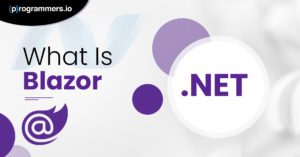A quality web architecture has become extremely necessary for data and information. The flow of data and information is highly important for businesses today to achieve their desired business objectives. The web architecture helps leverage proper data flow and ensures that all problems are effectively solved for the future.
A web application architecture with seamless features and a flawless user experience can help reduce the chances of downtime and can save the application from crashing.
Organizations today want to develop own web application framework so that they can save costs associated with external developers. To make your own framework, it is highly necessary that you know the ins and outs of the development process and are well versed with how it transpires.
Read: How web Apps have impacted during covid
In this article, we take a look at how a web application framework should work, along with everything else that is associated with it. This article will help act as a guide for all future motives and will help educate you overall you need to know about web application framework.
What is a Web Application Architecture?
To simplify it for you, a web application architecture can best be defined as a blueprint of interactions between databases, components, user interfaces, middleware systems and all servers located within an application.
The web application architecture for your application can also be used as a means to describe the layout that connects the server-side of the application with the client-side for a congruent experience for the customer.
Why is it Important?
Market patterns and client expectations around us are changing at a rapid pace. The tech world is growing at a rapid pace and we have digital innovations unlike we have ever seen before. A web application needs to be built on a strong foundation so that it can meet the objectives associated and can help take steps towards better customer reach.
A well-formulated web application framework can help manage different loads and can also adapt to the changing business patterns around us. User expectations are tied to the innovations offered by your customers and the recent updates in the digital world. If you are able to remain competitive and follow the recent innovations in the world of digital tech, you will be able to meet and even exceed the expectations that your customers have from you.
Read: Web Framework Comparison ReactJs vs AngularJs vs VueJs
How Does the Web App Architecture Work?
All web application frameworks are designed out of two core components. These components add up with each other to make the entire framework.
- Client side: The first primary component is the client-side of the web application. The client side is also known as the frontend of the web and is made out of CSS, HTML or JavaScript. The coding for the frontend of your web application framework is stored in the browser, where users eventually interact with it.
- Server side: The second core component in your web application framework is known as server side or backend. The backend controls the flow of logic and all business operations. The backend can only respond to requests made through HTTP and is written and programmed through Ruby, Python, PHP and Java among others.
Some web application frameworks also have an additional component known as the database server. The database server is responsible for providing data to the server-side of the application and speeding up operations when and if required.
Read: Python vs node.js for web application
Layers of Web Architecture
A web architecture framework is made out of multiple layers. The web architecture is layered into different layers, which include the presentation, database, persistence and business layers. Smaller organizations have only three layers instead of four, where both persistence and business can merge together to create one single layer. Bigger organizations with greater interaction with customers can even have over five layers.
- Presentation Layer: The first of the layers we will be studying is the presentation layer. The presentation layer is built through CSS, HTML and JavaScript. The presentation layer comes with its own framework that enables effective communication between the framework. Communication is necessary to ensure the best experience for customers.
- Business Layer: The second layer is known as the business layer, which is used to define all rules, regulations and logic that are unique to the business. The business layer processes all business logic and is mostly associated with the backend of the architecture.
- Persistence Layer: The persistence layer is directly associated with data and is also called the data access layer. The persistence layer persistently extracts data from the servers and takes them to all corresponding levels.
- Database Layer: Finally, we have the database layer, which the persistence layer above extracts all the data from. The database layer is responsible for holding the data and the business logic is responsible for running the front and the backend.
Components of a Web Application Framework
Finally, we look at the components of a web application framework.
- User Interface Components: We start with the components related to the user interface. These components manage the page displays, configuration and notifications etc.
- Structural Web Components: All such web components are present within the server components. These components handle business logic and data.
These two components are further broken down into web app server components and framework components. All of these components work together to deliver the results users expect.
A web app is basically a sum of the architecture behind it. A qualified architecture can help achieve better results. We hope you know more about the web app framework and architecture after this article.




